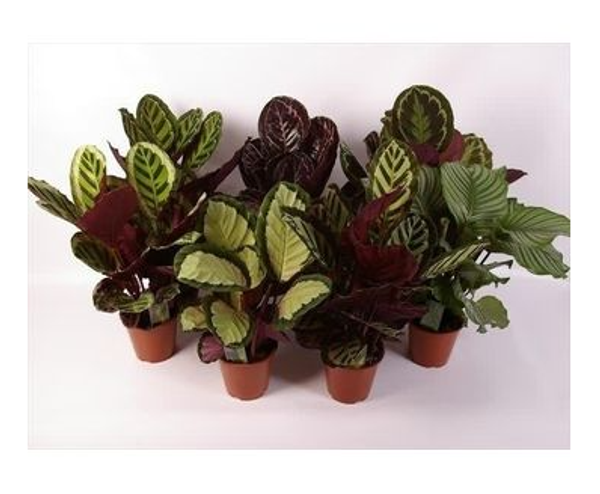Product Overview
Calathea Plants are exclusively grown for their foliage. They come in many shapes and sizes, some so delicately patterned that they look like they have been painted. The leaves stand stiffly away from the stem and if you pay close enough attention you will see that they change position throughout the day, in response to light and temperature. Some also fold their leaves at night time, giving that extra sense of the plant being alive.
Calathea prefer natural, indirect light with absolutely no direct sun, the beautifully patterned leaves will definitely scorch. A slightly shady spot is ok, but too dark will affect growth and leaf colour.
Calatheas thrive in warm, humid conditions. During warmer months they must be kept moist, not wet or sitting in water. Best practice is to water well from below, allowing the top of the compost to remain dry, therefore avoiding any problems that can occur with excess moisture around the base of the stem. Approximately once a week should be enough, then allow to dry slightly before watering again. Do not allow to sit in water.
If possible they much prefer rainwater, or tap water that has been allowed to stand for 24 hours.
To help humidity group together with other plants, place the pot on a saucer of moist pebbles / gravel, and regular misting will all benefit your plant
Healthy plants and vigorous growth will result from warm temperatures between 18 - 27c.
Fertilise with a half strength balanced liquid feed once every 2 weeks in Spring and Summer.
If cooler Winter temperatures are experienced then reduce watering, and do not feed.
Try not to allow temperatures to drop below 15c.
Minimum Temp: 15c
Common problems with Calathea are crispy, brown leaf edges, basically due to low humidity, dry air. Simply cut these off and increase humidity.
Unhealthy rotting stems are usually a sign of overwatering, or too low temperatures and cold draughts. Remove damaged leaves and stems and move to a warmer spot away from draughts.
Re-pot if necessary in Spring once the roots have taken up all the room in the current pot. Only go up slightly in pot size, and use a good free draining houseplant compost. Too big a pot, and too much compost will hold too much water.
Lower, older leaves may discolour as the plant grows and focuses its energy on the new upper growth. This is quite natural. These should be removed to encourage good plant health.
Warnings:
Not known to be toxic to pets or humans.







